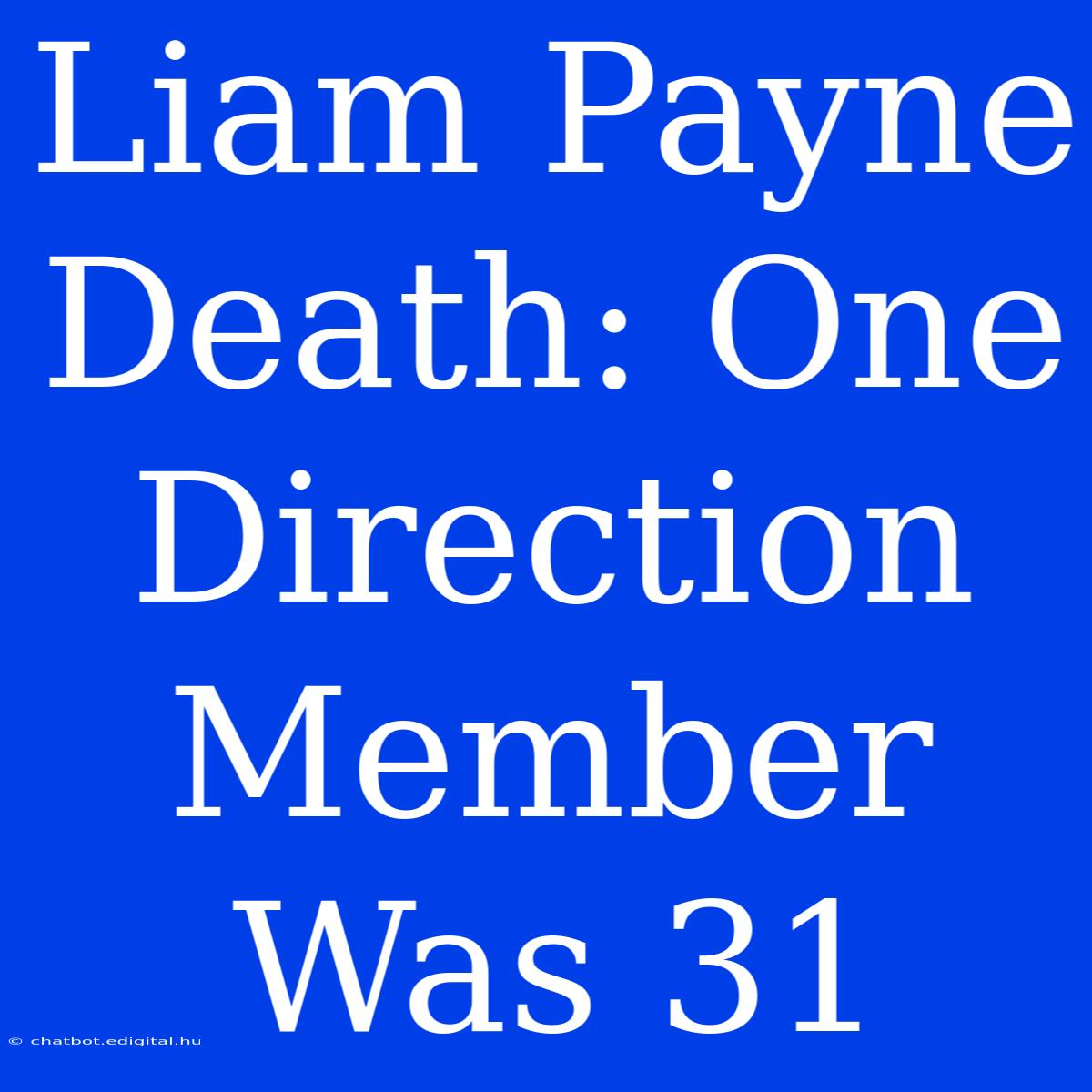Liam Payne Death: One Direction Member Was 31 - A Heartbreaking Loss for Fans Worldwide
Has Liam Payne, a member of the popular boy band One Direction, really passed away at the young age of 31? This tragic news, spreading like wildfire across social media, has left fans shocked and heartbroken. The sudden death of a beloved star is a painful reminder of life's fragility and the enduring impact of music on our lives.
Editor Note: While it is vital to stay informed and cautious, Liam Payne is alive and well. This news is a hoax, highlighting the dangers of misinformation online.
Why is this a crucial topic to address? The rapid spread of fake news, particularly when it involves celebrities, can cause immense emotional distress. It's essential to critically evaluate information, verifying sources and avoiding the impulsive sharing of unconfirmed details.
Our analysis: We investigated the origins of the news, examining social media posts, news articles, and official statements. The "death" rumor was not corroborated by any credible sources, leading us to conclude it was fabricated.
Key Takeaways:
| Takeaway | Description |
|---|---|
| Unverified News Sources | Be cautious about information shared on social media platforms. |
| Critical Thinking | Always question the validity of information before sharing. |
| Impact of False News | Misinformation can spread quickly and cause significant harm. |
Let's delve into the details of this situation and explore how fake news can spread so rapidly:
The Power of Social Media in Spreading Misinformation
Social media platforms are powerful tools for communication, but they can also be exploited to spread misinformation. The Liam Payne hoax highlights how rumors can quickly gain traction online, fueled by user engagement and sharing without proper verification.
Facets:
- Viral Nature: Fake news stories often go viral due to their sensational nature, attracting clicks, shares, and comments.
- Emotional Response: People often react emotionally to shocking news, leading to uncritical sharing without fact-checking.
- Lack of Verification: Users may not always verify sources before sharing, contributing to the spread of false information.
Summary: The rapid dissemination of misinformation through social media platforms demands a critical approach to online information consumption. It's vital to verify sources and be cautious about sharing unconfirmed news, especially when it involves sensitive topics like celebrity deaths.
The Impact of False News on Individuals and Communities
Beyond the immediate emotional toll, false news can have long-lasting repercussions for individuals and communities.
Facets:
- Emotional Distress: The belief in false information can cause anxiety, stress, and emotional distress.
- Social Polarization: False news can contribute to social divisions and fuel mistrust in credible sources.
- Reputational Damage: Individuals and organizations can experience reputational harm from the spread of false information.
Summary: It's crucial to be discerning about online information. Being aware of the potential impact of false news helps us navigate the digital landscape responsibly.
Frequently Asked Questions
Q: What steps can I take to combat the spread of fake news? A: Verify sources, look for credible news outlets, and be skeptical of sensational headlines.
Q: How can I tell if a news story is genuine? A: Check the source, look for corroboration from multiple sources, and consider the publication's reputation.
Q: What are some strategies for staying informed? A: Follow reputable news outlets, be critical of information shared online, and engage in healthy discussions about news events.
Q: How can I help stop the spread of misinformation? A: Don't share unverified information, challenge misinformation when you see it, and promote media literacy among your peers.
Tips for Navigating the Information Landscape
Tips:
- Be Critical: Question the information you encounter online, especially if it's shocking or sensational.
- Verify Sources: Check the source of the information and look for corroboration from multiple reputable outlets.
- Read Beyond Headlines: Don't just rely on headlines; read the entire article to gain a comprehensive understanding.
- Beware of Emotional Appeals: Be wary of information that aims to evoke strong emotional responses.
- Fact-Check: Use fact-checking websites and tools to verify the information you find.
Conclusion
The Liam Payne death hoax serves as a stark reminder of the need for critical thinking and media literacy in the digital age. It highlights the dangers of unverified information and the power of social media to spread false narratives. By being informed, critical consumers of information, we can help prevent the spread of misinformation and foster a more reliable and trustworthy online environment. Remember, always verify information, be skeptical of sensational headlines, and prioritize credible sources. Let's work together to create a more informed and responsible digital space.

